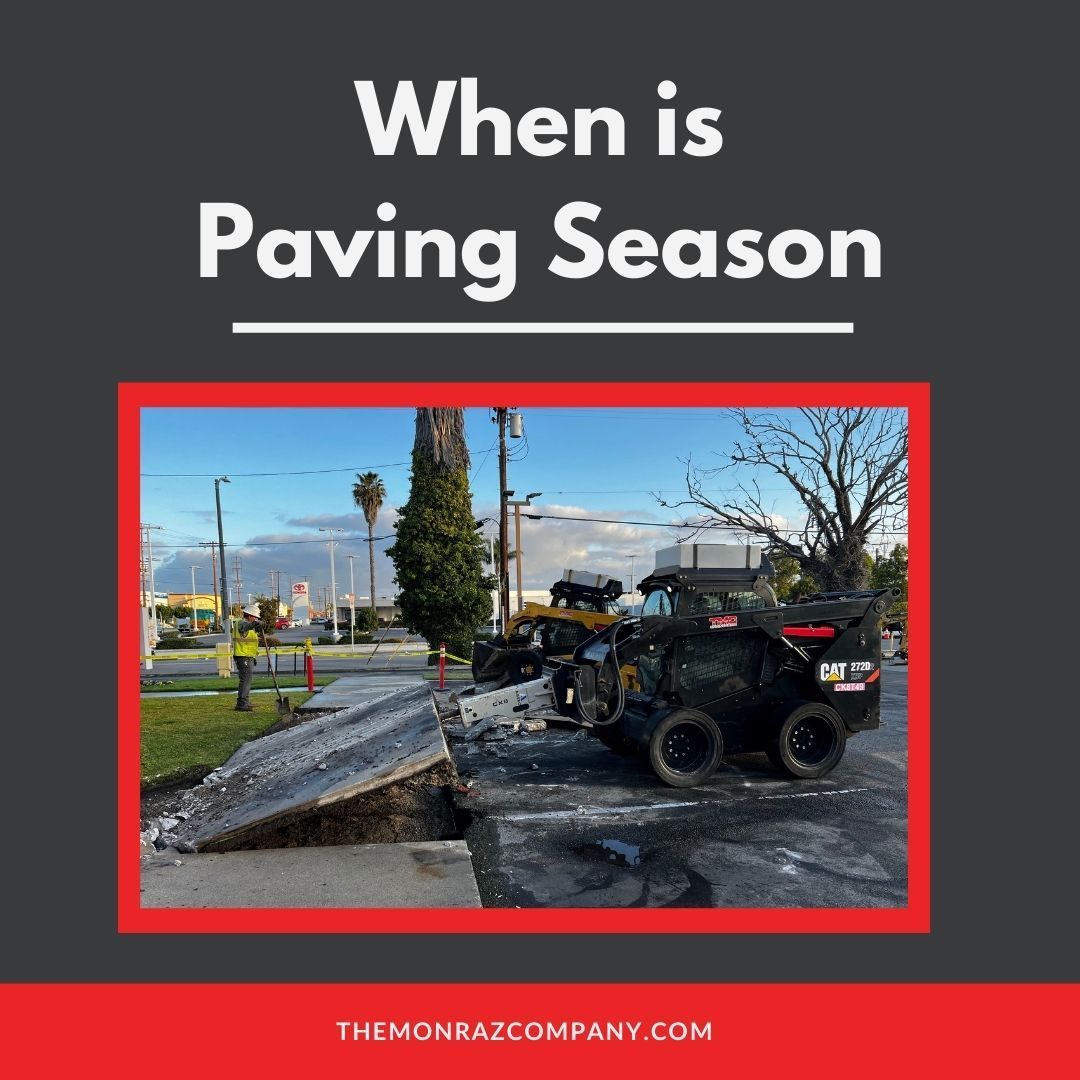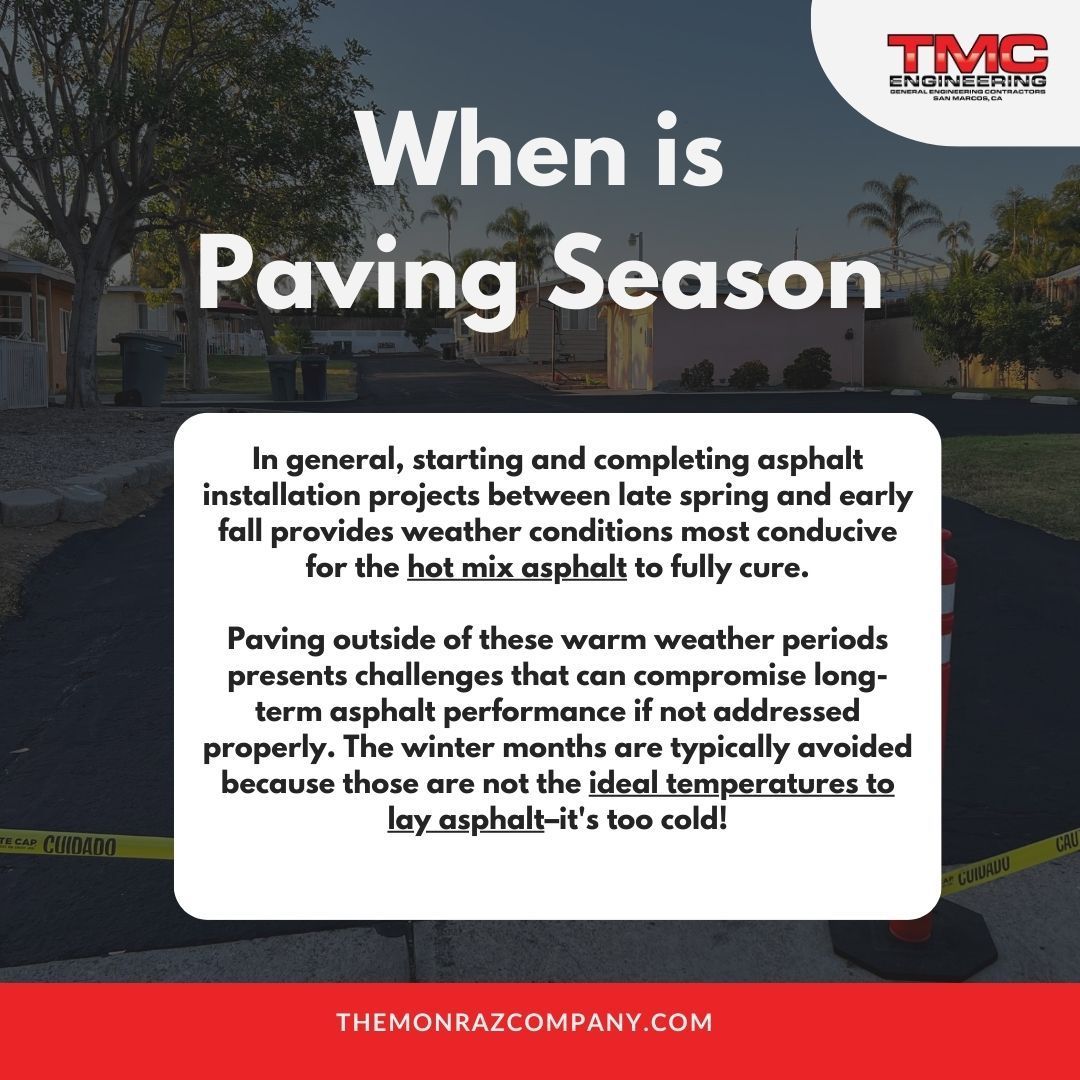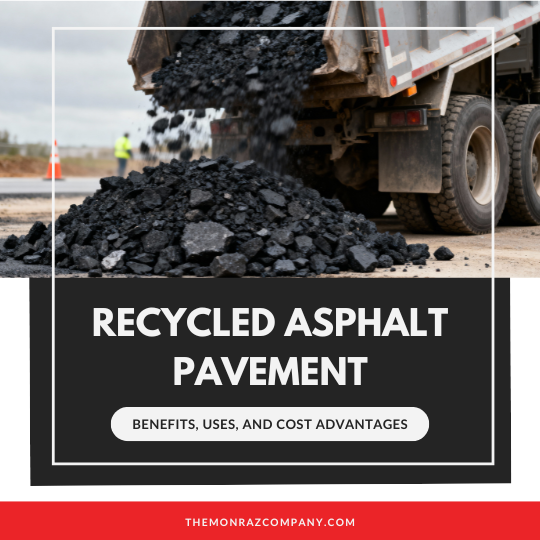When is Paving Season? Choosing the Right Time for Your Asphalt Projects

Asphalt paving is one of the biggest investments that both home and business owners make. The timing of when to start and complete asphalt paving projects is one of the most important considerations, as the weather conditions at the time of installation can significantly impact the longevity and performance of the new pavement surface. Paving at the wrong time of year can lead to issues like premature cracking, damage from rain or freezing temperatures, and reduced durability over the life of the asphalt.
With this in mind, today we will take a deep dive into understanding when the ideal paving season occurs based on seasonal weather patterns. By planning your asphalt driveway, parking lot, or road resurfacing projects within these recommended timeframes, you can give your new pavement the best chance to fully cure and set correctly for maximum strength and lasting quality!

When is Paving Season?
The United States experiences four distinct seasons annually–spring, summer, fall, and winter. The timing of these seasonal changes from region to region determines the optimal paving season windows for different parts of the country. In general, starting and completing asphalt installation projects between late spring and early fall provides weather conditions most conducive for the hot mix asphalt to fully cure.
Paving outside of these warm weather periods presents challenges that can compromise long-term asphalt performance if not addressed properly. The winter months are typically avoided because those are not the ideal temperatures to lay asphalt –it’s too cold!
When Does Paving Season Start?
Ideally, paving season begins in late spring or early summer, around May or June in most parts of the country. By this time, daytime air temperatures have generally stabilized above 60 degrees Fahrenheit. These warmer weather conditions allow the asphalt mixture to be properly mixed, transported, placed, and compacted without issues like temperature segregation. They also provide suitable drying and curing for the hot mix asphalt to solidify and gain strength correctly. Paving during dry weather further permits thorough compaction before the effects of moisture.
When Does Paving Season End?
Most paving contractors recommend wrapping up asphalt installation projects by late summer or early fall, around August through September. Once overnight lows regularly dip below 50 degrees Fahrenheit, the risks of complications from colder weather increase. Paving too close to the first frosts of autumn creates challenges for the mixed asphalt to fully gain strength before freezing temperatures arrive. It can lead to issues like thermal cracking as the new pavement surface contracts and expands with daily temperature fluctuations.

Things To Do Before Paving Season Starts
Step 1: Establish your needs and wants.
Assess your property and make a list of paving goals–whether it’s a parking lot upgrade, new sidewalks, or driveway expansion. Identifying projects early helps contractors develop accurate estimates!
Step 2: Contact reliable paving companies.
Get consultations running from March through May from reputable pavers like us here at TMC Engineering . Discuss options, solutions, timelines and acquire proposals to compare.
Step 3: Prepare your budget.
Create a realistic budget that considers the scope and scale of your projects. Inquire about financing options if additional capital is required.
Step 4: Review contractor references.
Check online reviews, examine valid licenses, view galleries of similar past work and ask for referrals to ensure high workmanship standards.
Step 5: Confirm start and end dates.
Finalize project scheduling with your selected contractor depending on their workload and the weather forecast. Remember, paving later than August risks temperature issues.
Step 6: Obtain necessary permits.
Research and apply well in advance for any required building permits from your local jurisdiction to avoid approval delays.
Step 7: Notify tenants and neighbors.
Communicate estimated timelines and parking/access impacts to tenants, neighbors and nearby businesses courteously in advance.
With strategic planning done by springtime, you will be well prepared to hit the ground running once prime paving weather arrives late May through August. Compliance with seasonal best practices helps deliver paving projects characterized by long-term quality as highlighted in our post about the best weather for asphalt paving .
Paving at the right time helps to make your asphalt projects more durable and sustainable.
In conclusion, following the typical spring, summer, and early fall timeframe for your local climate optimizes weather conditions when installing a new asphalt. This allows for proper mixing, compaction, and curing of the hot mix without issues caused by excessive heat, cold temperatures, rain, or freezing. Sticking to recommended paving season windows takes full advantage of suitable weather to ensure your asphalt driveway, parking lot or road repaving project meets performance expectations for many satisfying years ahead.
Asphalt pavements are easy to construct and maintain with the expertise of experienced paving contractors. Here at TMC Engineering , we have a deep commitment to delivering projects characterized by the highest safety standards as well as workmanship and client satisfaction. We aim to provide you with valuable informative content and insights related to the services our team of experts provides!
Whether you require asphalt paving, striping, sealing, or concrete work, we offer a full suite of transportation construction solutions. Because our team member’s experiences range from 20 to 33 years in this industry, we can work in all weather conditions and have challenged them for our own confirmation. We invite you to contact us today for a FREE QUOTE. Let’s make quality projects together!




